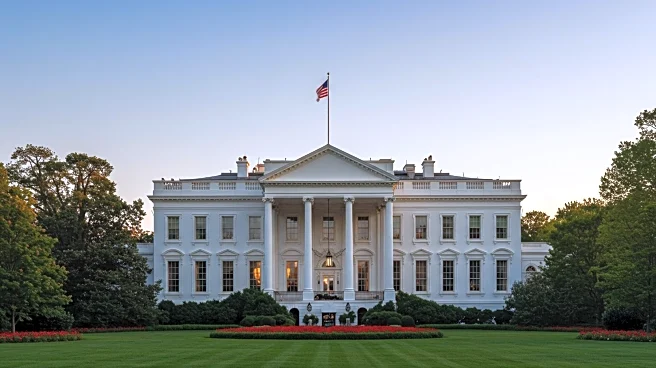What's Happening?
The Trump administration has announced a comprehensive review of exhibitions at the Smithsonian Institution. This initiative aims to evaluate the tone, historical framing, and alignment with American ideals across current and planned exhibitions. The review will scrutinize wall texts, websites, and social media content associated with the Smithsonian. According to a letter sent to Lonnie G. Bunch III, the secretary of the Smithsonian, museums will be required to amend any content deemed problematic within 120 days. The administration seeks to replace divisive or ideologically driven language with descriptions that are unifying, historically accurate, and constructive. This review will initially focus on eight of the Smithsonian's 21 museums. The move is part of President Trump's broader efforts to influence the Smithsonian, which traditionally operates independently of the executive branch.
Why It's Important?
The review of Smithsonian exhibitions by the Trump administration could have significant implications for how American history and culture are presented to the public. By mandating changes to exhibition content, the administration may influence the narrative and interpretation of historical events and figures. This could affect public understanding and education, potentially altering perceptions of American history. Museums and cultural institutions often play a critical role in shaping societal values and identity, and changes in their content could impact cultural discourse. Stakeholders such as historians, educators, and museum professionals may express concerns about the potential for political influence over independent cultural institutions.
What's Next?
The Smithsonian museums involved in the review will need to assess their exhibition content and make necessary adjustments within the 120-day timeframe. This process may involve collaboration with historians and curators to ensure compliance with the administration's directives. The Smithsonian's governing board, which has sole responsibility for personnel decisions, may face challenges in maintaining the institution's independence. Reactions from the public, cultural organizations, and political leaders are likely as the review progresses. The outcome of this initiative could set a precedent for future interactions between government and cultural institutions.
Beyond the Headlines
The review raises questions about the balance between government oversight and the autonomy of cultural institutions. It highlights the ethical considerations of political influence on historical narratives and the potential impact on cultural heritage preservation. The Smithsonian's response to the review may influence its future operations and governance, as well as its relationship with the executive branch. Long-term implications could include shifts in how museums approach controversial or sensitive topics in their exhibitions.











